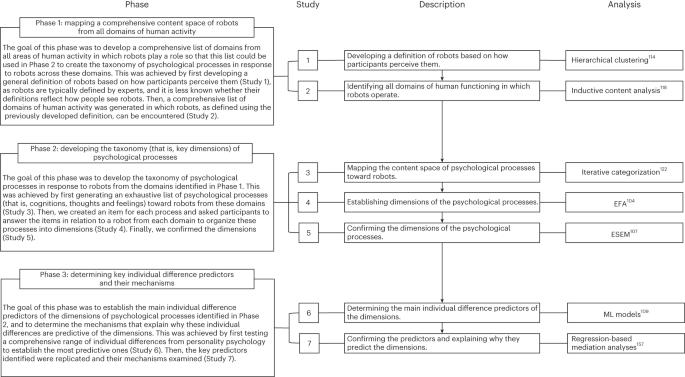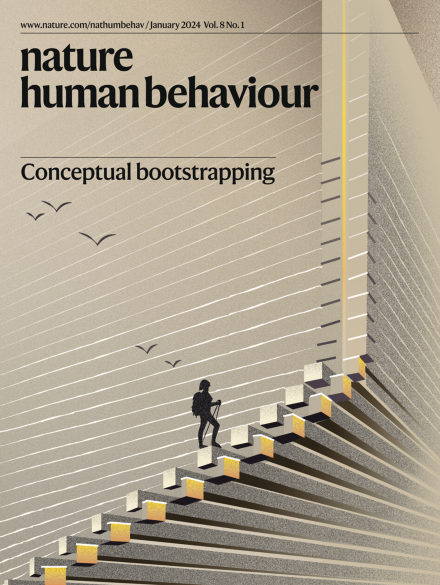机器人表征心理反应的正-负能力(PNC)模型。
IF 21.4
1区 心理学
Q1 MULTIDISCIPLINARY SCIENCES
引用次数: 0
摘要
机器人正成为社会中日益突出的一部分。尽管机器人的重要性越来越大,但目前还没有一个综合人们对机器人的心理反应并确定影响机器人的因素的总体模型。为了解决这个问题,我们创建了一个情感、认知和行为过程的分类法,以应对一个全面的刺激样本,该样本描绘了28个机器人 人类活动领域(例如,教育、酒店和工业),并检验了其个体差异预测因素。在测试9274项的七项研究中 通过在线小组招募的英国和美国参与者,我们使用数据驱动的方法,结合定性和定量技术,开发了正负能力模型,该模型将对刺激样本的所有心理过程分为三个维度:积极、消极和能力相关。我们还建立了这些维度的主要个体差异预测因子,并检验了每个预测因子的机制。总的来说,这项研究提供了对机器人表征的心理功能的深入理解。本文章由计算机程序翻译,如有差异,请以英文原文为准。

The positive–negative–competence (PNC) model of psychological responses to representations of robots
Robots are becoming an increasingly prominent part of society. Despite their growing importance, there exists no overarching model that synthesizes people’s psychological reactions to robots and identifies what factors shape them. To address this, we created a taxonomy of affective, cognitive and behavioural processes in response to a comprehensive stimulus sample depicting robots from 28 domains of human activity (for example, education, hospitality and industry) and examined its individual difference predictors. Across seven studies that tested 9,274 UK and US participants recruited via online panels, we used a data-driven approach combining qualitative and quantitative techniques to develop the positive–negative–competence model, which categorizes all psychological processes in response to the stimulus sample into three dimensions: positive, negative and competence-related. We also established the main individual difference predictors of these dimensions and examined the mechanisms for each predictor. Overall, this research provides an in-depth understanding of psychological functioning regarding representations of robots. The authors find that psychological responses towards representations of robots fall into three dimensions: positive, negative and competence. They also examine their individual difference predictors.
求助全文
通过发布文献求助,成功后即可免费获取论文全文。
去求助
来源期刊

Nature Human Behaviour
Psychology-Social Psychology
CiteScore
36.80
自引率
1.00%
发文量
227
期刊介绍:
Nature Human Behaviour is a journal that focuses on publishing research of outstanding significance into any aspect of human behavior.The research can cover various areas such as psychological, biological, and social bases of human behavior.It also includes the study of origins, development, and disorders related to human behavior.The primary aim of the journal is to increase the visibility of research in the field and enhance its societal reach and impact.
 求助内容:
求助内容: 应助结果提醒方式:
应助结果提醒方式:


